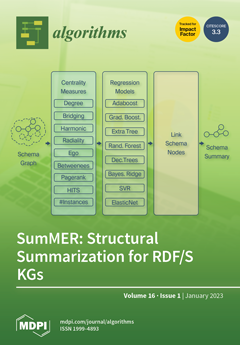Parameters often take key roles in determining the accuracy of algorithms, logics, and models for practical applications. Previously, we have proposed a general-purpose
parameter optimization algorithm, and studied its applications in various practical problems. This algorithm optimizes the parameter values by repeating
[...] Read more.
Parameters often take key roles in determining the accuracy of algorithms, logics, and models for practical applications. Previously, we have proposed a general-purpose
parameter optimization algorithm, and studied its applications in various practical problems. This algorithm optimizes the parameter values by repeating small changes of them based on a local search method with hill-climbing capabilities. In this paper, we present three diverse applications of this algorithm to show the versatility and effectiveness. The first application is the
fingerprint-based indoor localization system using IEEE802.15.4 devices called
FILS15.4 that can detect the location of a user in an indoor environment. It is shown that the number of fingerprints for each detection point, the fingerprint values, and the detection interval are optimized together, and the average detection accuracy exceeds
. The second application is the
human face contour approximation model that is described by a combination of half circles, line segments, and a quadratic curve. It is shown that the simple functions can well approximate the face contour of various persons by optimizing the center coordinates, radii, and coefficients. The third application is the
computational fluid dynamic (CFD) simulation to estimate temperature changes in a room. It is shown that the thermal conductivity is optimized to make the average temperature difference between the estimated and measured
C.
Full article





